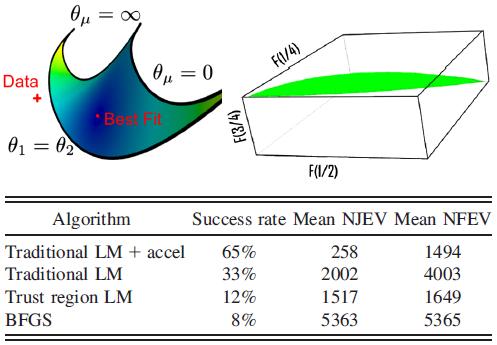Given a continuous function f (x), find the value x0 of x for which f (x0) = 0. We assume that both x and f (x) are real, although some of the algorithms that we see are valid for complex functions analytic complex variable. The values for which x0 satisfies f (x0) = 0 are called roots of the equation.
CLOSED METHODS
1. Graphic Methods
A simple method to obtain an approximation to the root of the equation f (x) = 0, is to plot the function and see where it crosses the x-axis.
Example: f(x)=x3+x2-3x+5

The graph shows the existence of some roots, including a double root at x = 4.2
There is a root in X= 4.23 and X=4.26
metodo grafico
2. The Bisection Method
In general, if f(x) is real and continuous in the interval from X1 to Xu and f(x1) and have f(Xu) opposite signs, that is
F(X1)F(Xu)<0>
then there is at least one real root between X1 and Xu.
METODOS CERRADOS
OPEN METHODS
3. Simple Fixed-point Iteration
Open methods employ a formula to predict the root. Such a formula can be develped for simple fixed-point iteration by rearranging the function f(x)=0, so that s is on the left-hand side of the equation:
x=g(x)

Figure 2.1: Graphical depiction of simple fixed-point method.
4. The Newton-Raphson Method
If the initial guess at the root is Xi, a tangent can be extended from the point (Xi, X(Xi)). The point where this tangent crosses the x axis usaually represents an improved estimate of the root.
The Newton-Raphson formula is
Xi+1=Xi –( f(Xi)/f’(Xi))
http://www.uv.es/diazj/cn_tema2.pdf
Open Methods
ROOTS OF POLYNOMINALS
Every polynomial P in x corresponds to a function, ƒ(x) = P (where the occurrences of x in P are interpreted as the argument of ƒ), called the polynomial function of P; the equation in x setting f(x) = 0 is the polynomial equation corresponding to P. The solutions of this equation are called the roots of the polynomial; they are the zeroes of the function ƒ (corresponding to the points where the graph of ƒ meets the x-axis). A number a is a root of P if and only if the polynomial x − a (of degree one in x) divides P. It may happen that x − a divides P more than once: some power (x − a)m divides P; the largest such power m is called the multiplicity of the root a in P. When P is the zero polynomial, the corresponding polynomial equation is trivial, and this case is usually excluded when considering roots: with the above definitions every number would be a root of the zero polynomial, with undefined (or infinite) multiplicity. With this exception made, the number of roots of P, even counted with their respective multiplicities, cannot exceed the degree of P.
A polynomial function in one real variable can be represented by a graph.
The graph of the zero polynomial
f(x) = 0
is the x-axis.
The graph of a degree 0 polynomial
f(x) = a0, where a0 ≠ 0,
is a horizontal line with y-intercept a0
The graph of a degree 1 polynomial (or linear function)
f(x) = a0 + a1x , where a1 ≠ 0,
is an oblique line with y-intercept a0 and slope a1.
The graph of a degree 2 polynomial
f(x) = a0 + a1x + a2x2, where a2 ≠ 0
is a parabola.

The graph of a degree 3 polynomial
f(x) = a0 + a1x + a2x2, + a3x3, where a3 ≠ 0
is a cubic curve.

The graph of any polynomial with degree 2 or greater
f(x) = a0 + a1x + a2x2 + ... + anxn , where an ≠ 0 and n ≥ 2
is a continuous non-linear curve.
The graph of a non-constant (univariate) polynomial always tends to infinity when the variable increases indefinitely (in absolute value).
Polynomial graphs are analyzed in calculus using intercepts, slopes, concavity, and end behavior.
The illustrations below show graphs of polynomials.


Roots of Polynomials





No hay comentarios:
Publicar un comentario